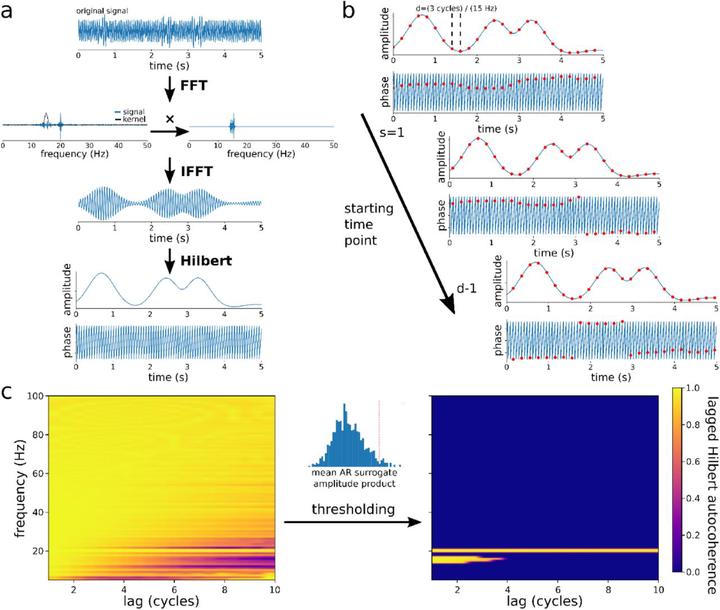Multi-scale parameterization of neural rhythmicity with lagged Hilbert autocoherence

Abstract
Analysis of neural activity in different frequency bands is ubiquitous in systems and cognitive neuroscience. Recent analytical breakthroughs and theoretical developments rely on phase maintenance of oscillatory signals without considering whether or not this assumption is met. Lagged (auto)coherence, the coherence between a signal and itself at increasing temporal delays, has been proposed as a way to quantify the rhythmicity, or periodicity, of a signal. However, current Fourier-based lagged autocoherence algorithms suffer from poor spectral accuracy and resolution, aliasing effects that become more pronounced at higher frequencies, and conflation with amplitude covariation, especially in frequency ranges in which the signal power is low. We introduce a continuous lagged autocoherence metric, lagged Hilbert autocoherence, that addresses these shortcomings by using multiplication in the frequency domain for precise bandpass filtering, instantaneous analytic signals via the Hilbert transform, and thresholding using the amplitude covariation of surrogate data generated by an autoregressive model. We show that this version of lagged coherence yields vastly higher spectral accuracy and resolution than lagged Fourier autocoherence, and that this unlocks additional, increasingly fine-grained applications. This includes examination of 1) frequency-specific differences in rhythmicity between conditions, 2) changes in signal rhythmicity during learning, and 3) the relationship between frequency-specific rhythmicity and behavior, trial-by-trial. Lagged Hilbert autocoherence thus offers a significant toolset advancement for analysis of neurophysiological rhythmicity.